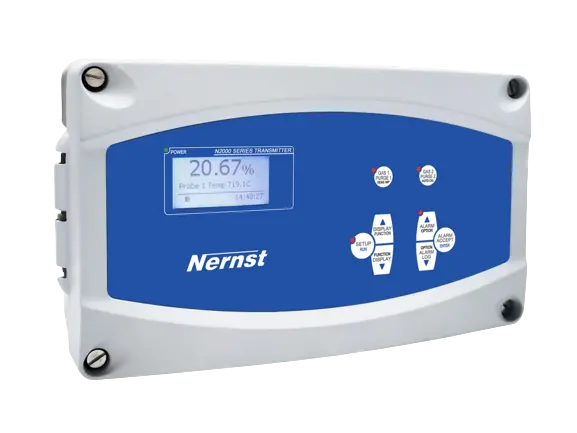Oxygen Analyzers are scientific instruments designed for the precise measurement of oxygen concentration in gases. They are widely used across various industries, including petrochemicals, power generation, environmental protection, and food packaging. These analyzers enable real-time monitoring of oxygen levels in heating furnaces, chemical reaction vessels, boiler water, and wastewater treatment facilities, ensuring production safety and optimizing process flows.
Here are some key factors to consider when purchasing Oxygen Analyzers, which we hope will be helpful to you.

Measurement Range and Accuracy
Measurement Range: Determine the required measurement range based on the specific application. For instance, high-purity oxygen detection may require ppm-level resolution, while combustion efficiency monitoring focuses more on percentage-level oxygen concentration.
Accuracy Requirements: Different applications have varying accuracy requirements. Generally, scientific research and precision manufacturing demand higher accuracy, whereas industrial process control is relatively more lenient. Choose an accuracy level that meets your actual needs.
Sensor Type
Electrochemical Sensors: Suitable for low-concentration oxygen measurement, offering cost-effectiveness and fast response times. However, they have a relatively short lifespan, typically 1-3 years.
Zirconia Sensors: Ideal for continuous online monitoring in high-temperature environments, featuring long-term stability and high-temperature resistance. However, they are more expensive.
Paramagnetic Sensors: Highly effective for measuring oxygen in medium concentration ranges, particularly suitable for applications requiring high sensitivity and stability.
Calibration and Maintenance
Calibration Frequency: Understand the recommended calibration cycle and confirm how easy it is to perform. Frequent calibration increases usage costs and workload, so selecting a product with easy maintenance and longer calibration intervals is more ideal.
Maintenance Convenience: Check if sensor replacement is straightforward and if there are on-site replaceable components, as this directly impacts daily operational costs and efficiency.
Environmental Adaptability
Temperature and Humidity: Ensure the selected instrument can operate normally in the expected working environment. For harsh temperature or humidity conditions, pay special attention to protection levels and heating/dehumidification devices.
Anti-Interference Capability: In certain environments, other gas components may interfere with measurement results. It is particularly important to choose analyzers with good selectivity and anti-interference design.
Data Processing and Output
Display Interface: An intuitive and easy-to-read display helps quickly access information. Large-screen color LCD displays can provide richer data presentation.
Data Storage and Transmission: Support for multiple data recording formats (e.g., CSV, PDF) and data export via various interfaces such as USB, RS232, and Ethernet. Some models also support wireless connectivity for remote monitoring.
By carefully considering these aspects, Oxygen Analyzers can help you select the instrument that best suits your needs, ensuring smooth measurement operations and providing reliable data for related decision-making.
Post time: Mar-27-2025



